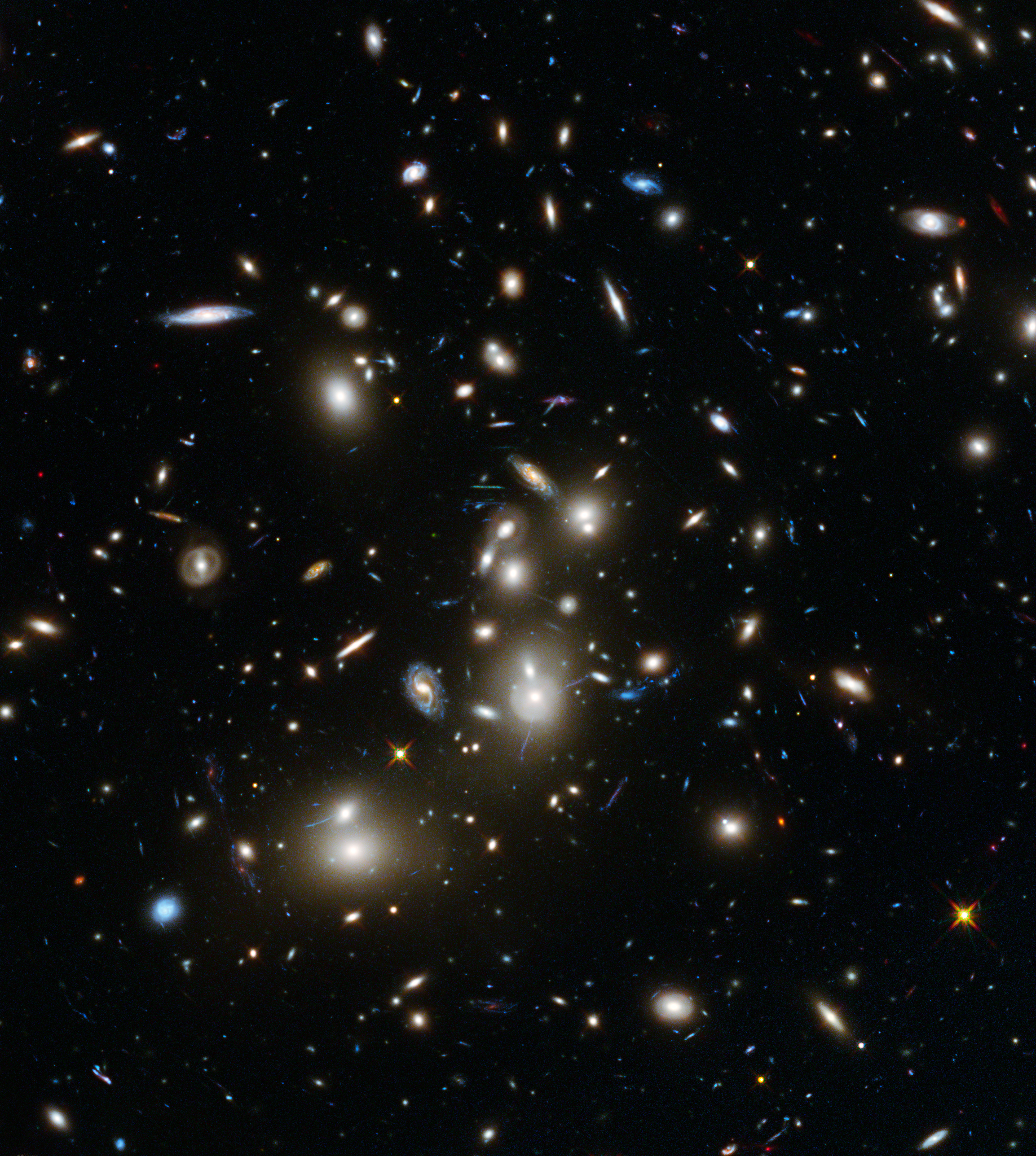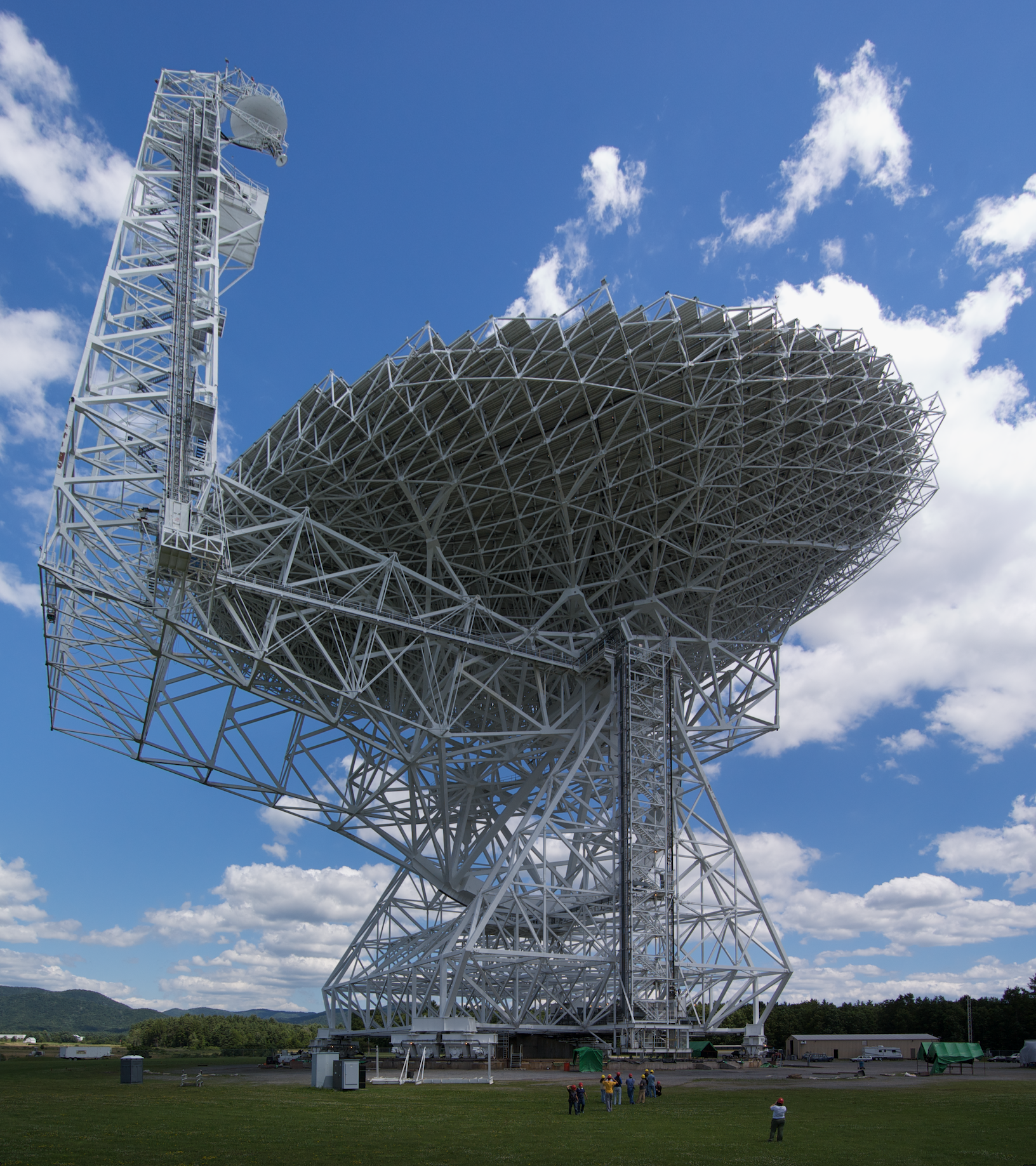|
Abell 2597
Abell 2597 is a galaxy cluster located about a billion light years from Earth in the constellation of Aquarius. It is a giant elliptical galaxy that is surrounded by a sprawling cluster of other galaxies. In 2018, the National Radio Astronomy Observatory (NRAO) captured cosmic weather event using the Atacama Large Millimeter/submillimeter Array (ALMA) that has never been seen before - a cluster of towering intergalactic gas clouds raining in on the supermassive black hole at the center of the huge galaxy. The black hole draws in vast store of cold molecular gas and sprays it back again in an ongoing cycle so that it resembles a gigantic fountain. Gallery ALMA and MUSE Detect Galactic Fountain.tif, Composite image showing the fountain-like flow of gas. See also * Abell catalogue The Abell catalog of rich clusters of galaxies is an all-sky catalog of 4,073 rich galaxy clusters of nominal redshift ''z'' ≤ 0.2. This catalog supplements a revision of George ... [...More Info...] [...Related Items...] OR: [Wikipedia] [Google] [Baidu] |
Abell Catalogue
The Abell catalog of rich clusters of galaxies is an all-sky catalog of 4,073 rich galaxy clusters of nominal redshift ''z'' ≤ 0.2. This catalog supplements a revision of George O. Abell's original "Northern Survey" of 1958, which had only 2,712 clusters, with a further 1,361 clustersthe "Southern Survey" of 1989, published after Abell's death by co-authors Harold G. Corwin and Ronald P. Olowin from those parts of the south celestial hemisphere that had been omitted from the earlier survey. The Abell catalog, and especially its clusters, are of interest to amateur astronomers as challenge objects to be viewed in dark locations on large aperture amateur telescopes. The Northern Survey The original catalog of 2,712 rich clusters of galaxies was published in 1958 by George O. Abell (1927–1983), who was then studying at the California Institute of Technology. The catalog, which formed part of Abell's PhD thesis, was prepared by means of a visual inspection of th ... [...More Info...] [...Related Items...] OR: [Wikipedia] [Google] [Baidu] |
NAOJ
The (NAOJ) is an astronomy, astronomical research organisation comprising several facilities in Japan, as well as an observatory in Hawaii and Chile. It was established in 1988 as an amalgamation of three existing research organizations - the Tokyo Astronomical Observatory of the University of Tokyo, International Latitude Observatory of Mizusawa, and a part of Research Institute of Atmospherics of Nagoya University. In the 2004 reform of national research organizations, NAOJ became a division of the National Institutes of Natural Sciences, Japan, National Institutes of Natural Sciences. Facilities ;Mitaka Campus (Mitaka, Tokyo. ) :The Headquarters, Astronomy Data Center, Advanced Technology Center, Public Relations Center :Solar Flare Telescope, Sunspot Telescope, TAMA 300 gravitational wave detector :Tokyo Photoelectric Meridian Circle :Historical instruments: Solar Tower Telescope, 65cm refractor dome, 20cm refractor dome ;Nobeyama Radio Observatory (Minamimaki, Nagano, ... [...More Info...] [...Related Items...] OR: [Wikipedia] [Google] [Baidu] |
NRAO
The National Radio Astronomy Observatory (NRAO) is a federally funded research and development center of the United States National Science Foundation operated under cooperative agreement by Associated Universities, Inc. for the purpose of radio astronomy. NRAO designs, builds, and operates its own high-sensitivity radio telescopes for use by scientists around the world. Locations Charlottesville, Virginia The NRAO headquarters is located on the campus of the University of Virginia in Charlottesville, Virginia. The North American ALMA Science Center and the NRAO Technology Center and Central Development Laboratory are also in Charlottesville. Green Bank, West Virginia NRAO was, until October 2016, the operator of the world's largest fully steerable radio telescope, the Robert C. Byrd Green Bank Telescope, which stands near Green Bank, West Virginia. The observatory contains several other telescopes, among them the telescope that utilizes an equatorial mount uncommon for radio te ... [...More Info...] [...Related Items...] OR: [Wikipedia] [Google] [Baidu] |
Epoch (astronomy)
In astronomy, an epoch or reference epoch is a moment in time used as a reference point for some time-varying astronomical quantity. It is useful for the celestial coordinates or orbital elements of a celestial body, as they are subject to perturbations and vary with time. These time-varying astronomical quantities might include, for example, the mean longitude or mean anomaly of a body, the node of its orbit relative to a reference plane, the direction of the apogee or aphelion of its orbit, or the size of the major axis of its orbit. The main use of astronomical quantities specified in this way is to calculate other relevant parameters of motion, in order to predict future positions and velocities. The applied tools of the disciplines of celestial mechanics or its subfield orbital mechanics (for predicting orbital paths and positions for bodies in motion under the gravitational effects of other bodies) can be used to generate an ephemeris, a table of values giving the posit ... [...More Info...] [...Related Items...] OR: [Wikipedia] [Google] [Baidu] |
Galaxy Cluster
A galaxy cluster, or a cluster of galaxies, is a structure that consists of anywhere from hundreds to thousands of galaxies that are bound together by gravity, with typical masses ranging from 1014 to 1015 solar masses. They are the second-largest known gravitationally bound structures in the universe after galaxy filaments and were believed to be the largest known structures in the universe until the 1980s, when superclusters were discovered. One of the key features of clusters is the intracluster medium (ICM). The ICM consists of heated gas between the galaxies and has a peak temperature between 2–15 keV that is dependent on the total mass of the cluster. Galaxy clusters should not be confused with ''galactic clusters'' (also known as open clusters), which are star clusters ''within'' galaxies, or with globular clusters, which typically orbit galaxies. Small aggregates of galaxies are referred to as galaxy groups rather than clusters of galaxies. The galaxy groups and c ... [...More Info...] [...Related Items...] OR: [Wikipedia] [Google] [Baidu] |
Aquarius (constellation)
Aquarius is an celestial equator, equatorial constellation of the zodiac, between Capricornus and Pisces (constellation), Pisces. Its name is Latin for "water-carrier" or "cup-carrier", and its old astronomical symbol is (♒︎), a representation of water. Aquarius is one of the oldest of the recognized constellations along the zodiac (the Sun's apparent path). It was one of the 48 constellations listed by the 2nd century astronomer Ptolemy, and it remains one of the 88 modern constellations. It is found in a region often called the Sea (astronomy), Sea due to its profusion of constellations with watery associations such as Cetus the whale, Pisces (constellation), Pisces the fish, and Eridanus (constellation), Eridanus the river. At apparent magnitude 2.9, Beta Aquarii is the brightest star in the constellation. History and mythology Aquarius is identified as "The Great One" in the Babylonian star catalogues and represents the god Ea (god), Ea himself, who is commonly depic ... [...More Info...] [...Related Items...] OR: [Wikipedia] [Google] [Baidu] |
National Radio Astronomy Observatory
The National Radio Astronomy Observatory (NRAO) is a federally funded research and development center of the United States National Science Foundation operated under cooperative agreement by Associated Universities, Inc. for the purpose of radio astronomy. NRAO designs, builds, and operates its own high-sensitivity radio telescopes for use by scientists around the world. Locations Charlottesville, Virginia The NRAO headquarters is located on the campus of the University of Virginia in Charlottesville, Virginia. The North American ALMA Science Center and the NRAO Technology Center and Central Development Laboratory are also in Charlottesville. Green Bank, West Virginia NRAO was, until October 2016, the operator of the world's largest fully steerable radio telescope, the Robert C. Byrd Green Bank Telescope, which stands near Green Bank, West Virginia. The observatory contains several other telescopes, among them the telescope that utilizes an equatorial mount uncommon for radio te ... [...More Info...] [...Related Items...] OR: [Wikipedia] [Google] [Baidu] |
Atacama Large Millimeter Array
The Atacama Large Millimeter/submillimeter Array (ALMA) is an astronomical interferometer of 66 radio telescopes in the Atacama Desert of northern Chile, which observe electromagnetic radiation at millimeter and submillimeter wavelengths. The array has been constructed on the elevation Chajnantor plateau - near the Llano de Chajnantor Observatory and the Atacama Pathfinder Experiment. This location was chosen for its high elevation and low humidity, factors which are crucial to reduce noise and decrease signal attenuation due to Earth's atmosphere. ALMA provides insight on star birth during the early Stelliferous era and detailed imaging of local star and planet formation. ALMA is an international partnership amongst Europe, the United States, Canada, Japan, South Korea, Taiwan, and Chile. Costing about US$1.4 billion, it is the most expensive ground-based telescope in operation. ALMA began scientific observations in the second half of 2011 and the first images were relea ... [...More Info...] [...Related Items...] OR: [Wikipedia] [Google] [Baidu] |
Galaxy Clusters
A galaxy cluster, or a cluster of galaxies, is a structure that consists of anywhere from hundreds to thousands of galaxies that are bound together by gravity, with typical masses ranging from 1014 to 1015 solar masses. They are the second-largest known gravitationally bound structures in the universe after galaxy filaments and were believed to be the largest known structures in the universe until the 1980s, when superclusters were discovered. One of the key features of clusters is the intracluster medium (ICM). The ICM consists of heated gas between the galaxies and has a peak temperature between 2–15 keV that is dependent on the total mass of the cluster. Galaxy clusters should not be confused with ''galactic clusters'' (also known as open clusters), which are star clusters ''within'' galaxies, or with globular clusters, which typically orbit galaxies. Small aggregates of galaxies are referred to as galaxy groups rather than clusters of galaxies. The galaxy groups and clus ... [...More Info...] [...Related Items...] OR: [Wikipedia] [Google] [Baidu] |






.jpg)
